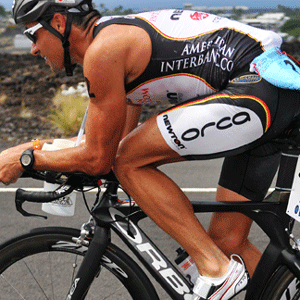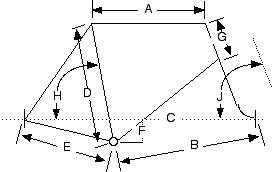Measuring conventions
You'll want to follow the articles in succession, starting with Intro to the F.I.S.T. Method:
1. F.I.S.T. axioms
2. F.I.S.T. protocol
3. Measuring conventions <– You are here
4. Seat height
5. Cockpit length
6. Hip angle
7. Armrest drop
8. Tools of the trade
9. Your bike's "waistline"
10. Translating fit specs to bike specs
This is the fourth article of a series in which we lay out our process for tri bike fit. You should've read our article on F.I.S.T. protocol prior to this. Our series begins here.
All the above stated, at some point you actually must get 'round to measuring bikes, body angles, and the like. And, a FIST fit is not simply a process where a fitter helps an athlete find any old position that feels comfortable. Far from it. The end result of a properly executed bike fit is a position that conforms to a very narrow set of predetermined specs, measured both as angles formed by the body, and points on the bike.
DETERMNATION OF SEAT ANGLE: For quite a few years, the "Slowtwitch" way to measure a seat angle, for the purpose of bike fitting, was to measure the acute angle formed by two lines intersecting at the bike's bottom bracket. One line is horizontal, the other passes through the center of the bike's saddle. This year, we're changing. We're now measuring from the bottom bracket to the middle of saddle's rails. We're making this change because it's a measure more closely related to the bikes a subject is likely to buy in today's tri bike market. Since more and more bikes these days have "zero-offset" clamps that place the saddle directly in line with the centerline of the seat tube, we're measuring our seat angles that way. In so doing, when we say your saddle is positioned at, say 77 degrees of seat angle, this also descriptive of the seat angleof the bike a subject would ride, as long as the bike's seat clamp "grabs" the saddle in line with the seat tube and post.
This is, by the way, a point roughly 17cm behind the nose of the saddle, for most saddles. This is about 3cm rearward of the point midway through the saddle (in most cases). This means that, on average, a difference of about 2 to 3 degrees of seat angle exists between an angle measured through the center of the rails versus the centerline of the saddle. Therefore, what "we" previously called an 80 degrees seat angle we will now call a 78 degrees seat angle, or thereabouts.
ANATOMICAL MARKERS: When we measure angles of the body, we use markers that are easy to palpate. They aren't magic, or special. They're just the ones we use. Specifically, we use the knee — dead center in the middle, on the lateral side — as the apex of the knee angle (when we're identifying proper saddle height). We then measure to the greater trochanter (bony protrusion on the side of the hip), and to the maleolus (bony protrusion of the ankle).
When we measure the hip angle, the greater trochanter is the axis, and we measure to the clavicle and the bottom bracket to get our angle. The clavicle is easy to palpate when you're in the aero position. We could just as easily have chosen the acromion, the bony protrusion on the lateral side of the shoulder. But we didn't. Had we done so, we'd be looking for hip angles slightly more acute than those we expect to see measuring through the clavicle.
The point is, our anatomical markers are arbitrary. But the angular aspects created by knee, hip and shoulder are not. Bodies work within closely circumscribed ranges, one to another. "Every person is different," is a trite way to attempt escape from under a more impactful truism: "Bodies are a lot more alike than they are different." There are very precise postures and aspects the body will find itself in when its properly fitted to a tri bike, and that is elemental to the FIST system.






Start the discussion at forum.slowtwitch.com